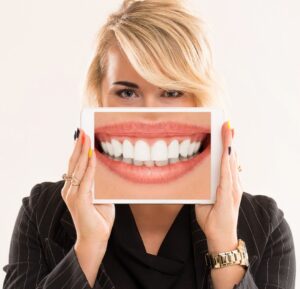Dental Bonding
Enhancing Smiles through Cosmetic Restoration
Dental bonding is a cosmetic dentistry procedure that involves the application of a tooth-colored resin material to repair or enhance the appearance of teeth. This versatile and cost-effective treatment addresses various dental issues, providing both restorative and aesthetic benefits. Here’s an overview of dental bonding:
1. Purpose of Dental Bonding:
- Cosmetic Enhancement: Dental bonding is commonly used to improve the appearance of teeth affected by discoloration, chips, cracks, or gaps.
- Tooth Restoration: It can be used to repair decayed teeth or alter the shape and size of teeth for a more harmonious smile.
2. Dental Bonding Material:
- Composite Resin: The material used for dental bonding is a tooth-colored composite resin, carefully selected to match the natural color of the patient’s teeth.
- Versatility: Composite resin allows for precise color matching and can be sculpted to achieve the desired shape and contour.
3. Dental Bonding Procedure:
- Consultation: The dentist evaluates the patient’s dental concerns and discusses the desired outcome.
- Surface Preparation: The tooth surface is prepared by roughening it slightly, and a conditioning liquid is applied to enhance bonding.
- Application of Bonding Material: The composite resin is applied in layers, shaped, and molded to achieve the desired result.
- Curing: A special light is used to harden and set each layer of the composite material.
- Final Adjustments: The bonded material is finely polished, and any necessary adjustments are made for proper alignment and bite.
4. Common Uses of Dental Bonding:
- Repairing Chips and Cracks: Bonding is an effective solution for restoring teeth with minor chips or cracks.
- Closing Gaps: It can be used to close small gaps or spaces between teeth.
- Covering Discoloration: Bonding helps mask stains and discolorations on tooth surfaces.
- Changing Tooth Shape: Dental bonding can alter the shape and length of teeth for a more aesthetically pleasing appearance.
- Filling Cavities: Bonding is used as a tooth-colored filling material for small to moderate cavities.
5. Advantages of Dental Bonding:
- Conservative Treatment: Minimal tooth reduction is required compared to other cosmetic procedures.
- Cost-Effective: Dental bonding is often more affordable than alternative cosmetic treatments.
- Quick Procedure: Bonding can typically be completed in a single dental visit.
6. Considerations for Dental Bonding:
- Durability: While durable, bonded material may not be as resistant to staining or wear as some alternative materials like porcelain veneers.
- Maintenance: Good oral hygiene practices and regular dental check-ups are essential for maintaining the longevity of bonding.
7. Limitations of Dental Bonding:
- Not Suitable for Large Restorations: Bonding may not be the ideal choice for large restorations, and other options like dental crowns or veneers may be recommended.
Dental bonding is a versatile and accessible cosmetic dentistry option that can significantly enhance the aesthetics of a smile. If you are considering dental bonding for cosmetic improvement or restorative purposes, consult with your dentist to determine the most suitable treatment plan based on your individual needs and goals.

